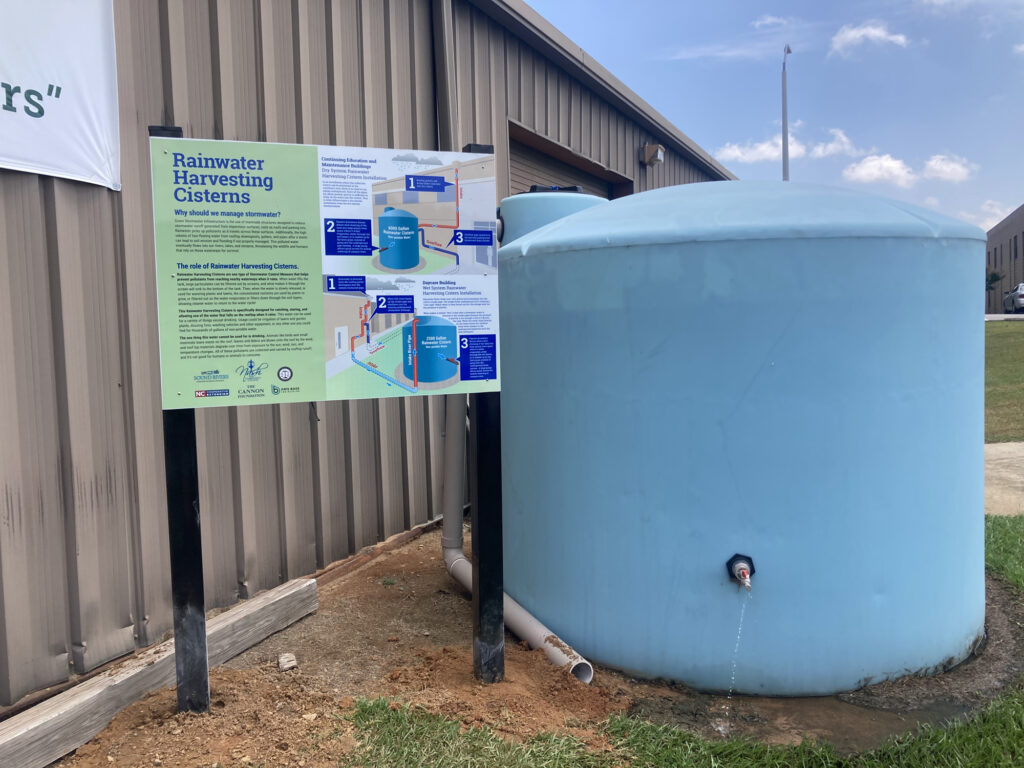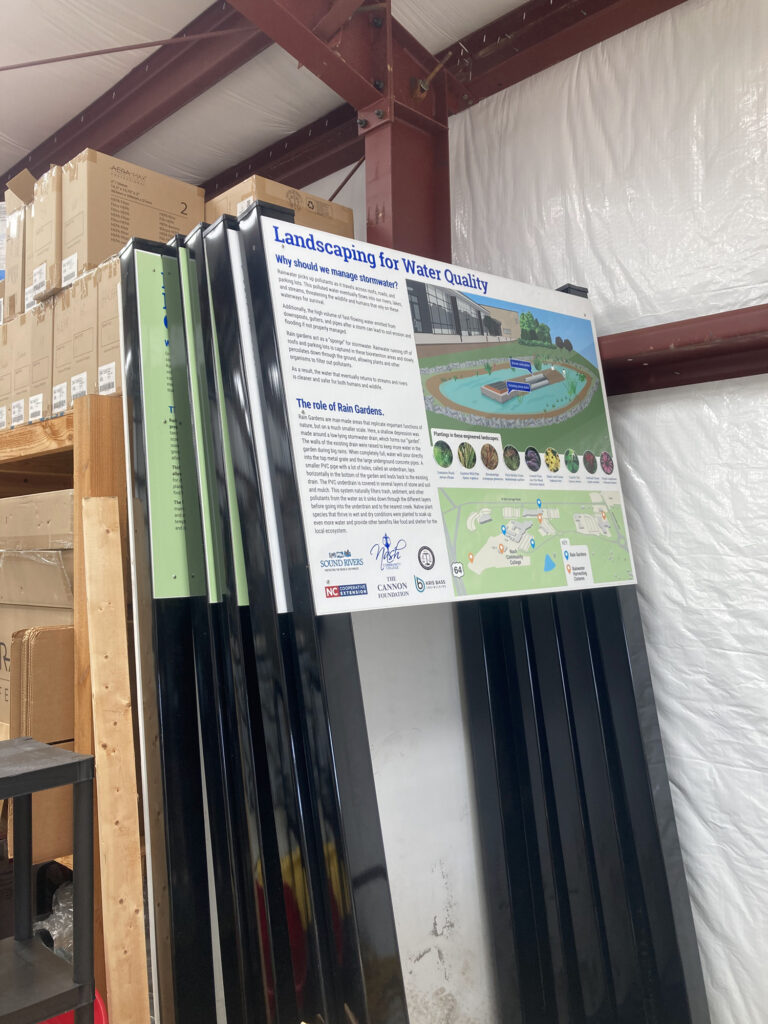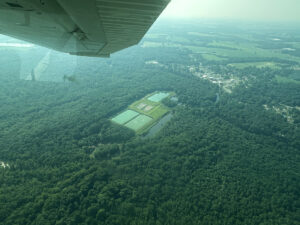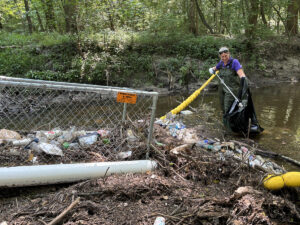News
Stormwater signs go up at Nash Community College
Climate Change, Education, Environmental, Stormwater, Stormwater Issues, Stormwater Restoration Projects, Stormwater Runoff, Tar-Pamlico Watershed, Water Quality
Posted on August 24th, 2023
A sign describing the purpose of this rainwater harvesting cistern was installed at the lineman training building at Nash Community College.
Sound Rivers Program Director Clay Barber went back to school — Nash Community College — this week to install signs at several completed stormwater projects.
The projects are part of Sound Rivers’ Campus Stormwater Program, which is tackling runoff, flooding and erosion at campuses across the Neuse and Tar-Pamlico watersheds. The signs explain how that works.
“The signs mean we can educate people on the function and benefits of green stormwater infrastructure,” Clay said. “We want to grow the number of people who are aware of how nature can clean water and how to replicate those functions to tackle climate change and stormwater runoff in the future.”
At Nash Community College, educational signs were erected at three of the four rainwater-harvesting cisterns that have been installed to collect rooftop runoff from the lineman training center, the continuing education building, the child daycare center and the maintenance building (since the maintenance building is set back and gets little traffic, a sign was not required). Another two signs for the two rain gardens constructed at the Early College High School and the auditorium are awaiting location approval before installation.

Clay said that it’s easy for people to think green stormwater infrastructure projects are simply part of the landscape, or a building’s function, thus the educational signs.
“More intense rainfall creates faster-moving water which causes erosion and flooding issues and carries trash and pollutants to the river faster,” Clay said. “We want to show people how to slow the water down, spread the water out and soak it into the ground, and in the case of rainwater harvesting cisterns, the added plus is that captured rainwater can be used on campus for anything non-potable water can be used for. Currently, that’s watering the very thirsty trees on campus during these periods of drought.”
Related News

Riverkeeper monitoring Tar-Pamlico Water Trail
July 25th 2024

Rain ramps up trash-trap cleanouts
July 25th 2024

Riverkeeper, intern take on emergency trash trap cleanout
July 25th 2024

Tar-Pam Riverkeeper investigates Cub Creek turbidity
July 25th 2024

Heavy rains lead to sky-high turbidity on Lick Creek
July 25th 2024

Riverkeeper: What goes up, must come down
July 18th 2024

Greenville’s trash trap gets emergency cleanout
July 18th 2024

Sound Rivers gets close up of cyanobacteria
July 18th 2024

